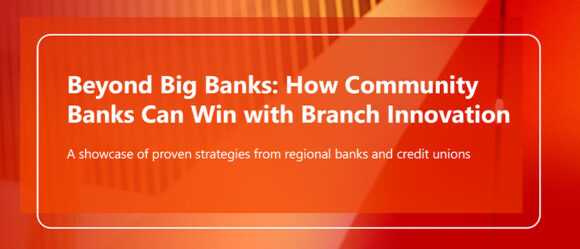The Credit Card Perception Gap

The credit card market is facing a paradox. Nearly half of U.S. consumers doubt they’d be approved for a new credit card—even as card applications hit their highest levels since pre-pandemic times. This disconnect between perception and reality, combined with shifting usage patterns across generations and risk tiers, requires a fundamental rethink of acquisition strategies.
Recent research from PYMNTS Intelligence in collaboration with i2c surveyed over two thousand U.S. consumers in June 2025 to understand the evolving credit landscape. What emerged are several critical findings that are reshaping how financial services marketers approach product positioning, messaging, and channel strategy.
Finding #1: The Access Paradox—High Anxiety Meets Strong Motivation
The data reveals a troubling disconnect. Forty-two percent of consumers doubt they would be approved for a new credit card, with 24.6% unsure and 17.6% expecting outright denial. Yet only 15% of consumers without a credit card report have been denied when applying. (PYMNTS) Federal Reserve data from 2024 confirms actual rejection rates at just 20.2% of what consumers expect. (Federal Reserve Bank of New York)
This perception wall is actively suppressing applications despite robust demand signals. According to The Financial Brand, within the last year, 43% of U.S. consumers opened a new credit card account, with the highest amount among Gen Z (68%) and Millennials (35%). More importantly, credit building is the number one reason consumers want a new credit card, cited by 26% of respondents.
What changes: The greatest acquisition barrier isn’t competition or offer strength— it’s consumer self-selection out of the funnel before they ever apply. Marketing must shift from pure persuasion to education that closes the perception-reality gap .
Tactical implications:
- Move pre-qualification messaging from fine print to front-and-center positioning in all acquisition channels.
- Reposition cards as credit-building tools, not just transaction instruments.
As The Financial Brand notes, “younger consumers focus primarily on building credit access and achieving financial stability” over maximizing rewards. Thus, leading with credit-building benefits in acquisition campaigns, supported by data on how the product contributes to score improvement, is a useful strategy.
Finding #2: The Generational Usage Divide Demands a Segmented Approach
As many marketers know, credit usage patterns vary dramatically by age, requiring distinct product features and messaging strategies. PYMNTS’ data supports this, claiming while 53% of all consumers plan most of their credit-backed purchases, only 37% of Gen Z plan their credit usage. This impulsive behavior creates risk but also opportunities for differentiation through embedded controls.
Yet, Gen Z isn’t entirely avoiding credit. BAI reports that 41% of Gen Z now have an active credit card, surpassing Millennials at the same age.
Simultaneously, older cohorts are demanding flexibility. This includes both flexible rewards and payment structures that adapt to their varying spending patterns.
What changes: Static, one-size-fits-all card products are losing relevance.
Dive deeper into generation-specific card utilization patterns in Media Logic’s post “The Top-of-Wallet Battle: Key Strategies for Credit Card Marketers.”
Tactical implications:
For Gen Z acquisition campaigns:
- Emphasize control features over rewards earn
- Highlight spend notifications, customizable spending limits, and real-time alerts
- Feature financial literacy resources and credit-building tools as primary benefits
For Millennials (peak earning years):
- Make adaptability the centerpiece of marketing narratives
- Demonstrate how rewards adjust to different spending patterns and life stages
- Feature dynamic “shapeshifting” categories and episodic installment options
Finding #3: From Lifestyle Tool to Financial Lifeline: Usage Patterns by Risk Tier
Credit cards serve fundamentally different purposes depending on the credit tier, requiring financial service marketers to employ segmented positioning strategies. Among subprime consumers, there’s a 16-percentage-point gap between essential and discretionary purchases made with credit. Super prime usage is roughly balanced (PYMNTS). With prices remaining elevated, more households are turning to credit cards for both everyday purchases and large expenses.
This shift toward essential expense coverage hasn’t dampened appetite for premium products; it’s simply changed what “premium” means. Many consumers are willing to pay fees for cards that bundle premium features, such as 0% interest installments or greater rewards. Research by Mintel confirms this with their findings that 45% of cardholders are willing to pay higher annual fees for superior rewards and benefits.
What changes: For subprime and near-prime segments, cards function as working capital tools, not lifestyle accessories. For premium seekers, control and flexibility matter more than status symbols.
Tactical implications:
For subprime/near-prime acquisition campaigns:
- Position cards as cashflow management tools in all marketing channels
- Emphasize payment flexibility and timing control
- Direct mail messaging: Focus on stability and payment control, not aspirational rewards
For premium product acquisition campaigns:
- Test fee-based products bundling high-value control features (leading with control features).
- Package: 0% installment plans + enhanced rewards + payment flexibility
- Position as financial tools that pay for themselves through cashflow optimization
- In direct mail: Show concrete ROI through savings/earnings examples
Marketing Imperatives
Despite showing signs of anxiety and apprehension, credit cards are still in high demand. The challenge is building and marketing products that address evolving expectations while closing the perception gaps, suppressing growth.
Let’s recap some ideas on how to move the needle forward:
- Close the Perception-Reality Gap: Combine pre-qualification messaging with transparent criteria across all channels. Move from pure persuasion to education-focused campaigns.
- Segment by Generation and Risk Tier: Gen Z needs digital-first experiences with embedded guidance and control features. Bridge millennials demand maximum personalization and dynamic rewards. Subprime/near-prime consumers require
essential expense management and payment flexibility. Premium seekers want fee-based bundles with clear ROI.
• Emphasize Control Over Traditional Rewards: Lead with payment flexibility, installment options, real-time spend management tools, and credit-building features. Show how products adapt to spending patterns and life changes.
• Leverage Omnichannel Strategies: Use direct mail for tangible impact and detailed value proposition communication. Deploy digital channels for pre-qualification tools that reduce friction.
Remember, the credit card market isn’t shrinking—it’s evolving. Financial services marketers who recognize these shifts and adapt accordingly will capture the demand that exists beneath the surface of anxiety.








